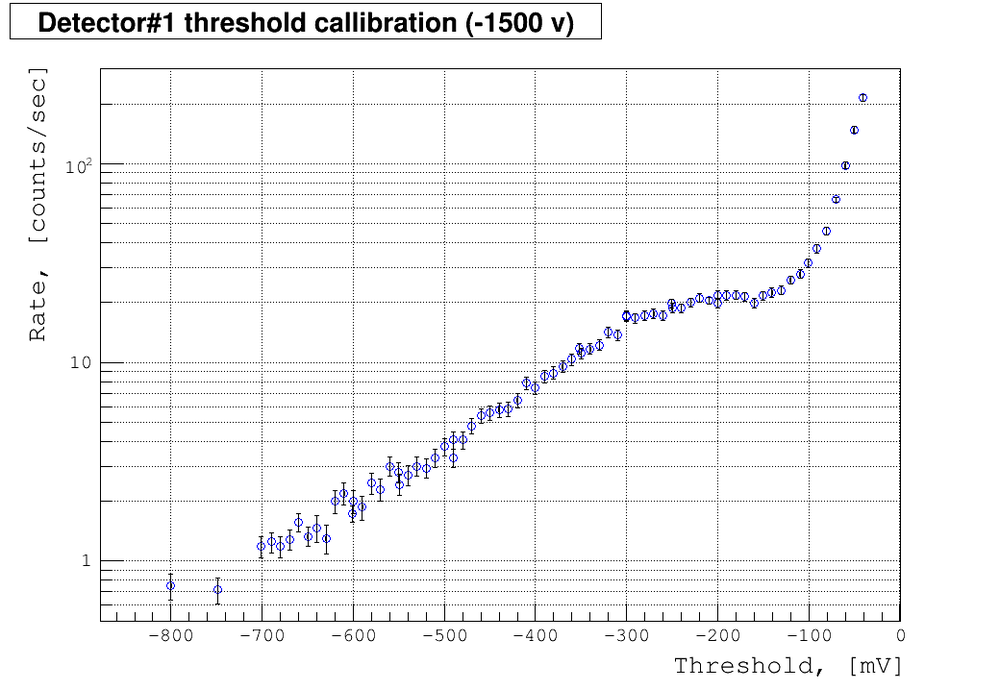Difference between revisions of "05/11/2011"
Jump to navigation
Jump to search
| Line 17: | Line 17: | ||
|- | |- | ||
!n's | !n's | ||
| − | |19.89<math>\pm</math>0.26 (5966 cnts) || | + | |19.89<math>\pm</math>0.26 (5966 cnts) || 58.84<math>\pm</math>0.29 (17652 cnts) |
|} | |} | ||
| + | |||
| + | So now we see the source. The ratio are: | ||
| + | |||
| + | <math>\farc{Rate_{source}}{Rate_{w/source}} = \frac{58.84}{19.89} = 2.96<math> | ||
Revision as of 20:11, 11 May 2011
Because is something wrong I decided to measure the counts rate as function of threshold energy. Maybe my threshold was incorrect.
Below are my results for n's detector with HAMAMATSU PMT (-1500 V):
So it looks like my previous threshold value (-500 V) was not good. Let's set it up the -200 V. And let's see does the n's detector sensitive to the source. The same set up and distances as before.
| counts/sec (5 min test), no source | counts/sec (5 min test), with source on the top of PS1 | |
|---|---|---|
| n's | 19.890.26 (5966 cnts) | 58.840.29 (17652 cnts) |
So now we see the source. The ratio are:
<math>\farc{Rate_{source}}{Rate_{w/source}} = \frac{58.84}{19.89} = 2.96<math>
